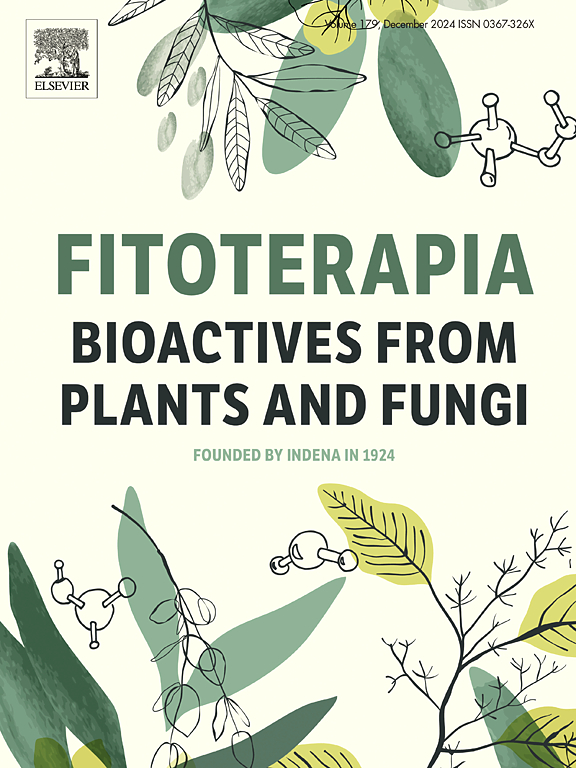LC-MS-qTOF分析和对彩黄提取物的生物学评价:一种结合体外和计算机方法的新尝试
IF 2.6
3区 医学
Q3 CHEMISTRY, MEDICINAL
引用次数: 0
摘要
本文研究了在不同极性溶剂(乙酸乙酯、乙醇、70%乙醇和水)下获得的黄颡鱼提取物的植物化学成分和生物潜力。体外综合分析表明,乙醇和乙酸乙酯提取物的酚类和类黄酮含量最高,具有较强的抗氧化活性,并对乙酰胆碱酯酶、丁基胆碱酯酶、α-淀粉酶、α-葡萄糖苷酶和酪氨酸酶等关键酶具有显著的抑制作用。对几种人类细胞系进行的细胞毒性试验表明,所测试的植物物种不表现出细胞毒性活性。LC-MS-qTOF分析鉴定了其生物活性成分,其中芹菜素是最令人感兴趣的化合物之一。一项涉及网络药理学、分子对接和分子动力学模拟的集成计算机方法揭示了芹菜素与涉及神经退行性和代谢过程的治疗靶点之间强烈而稳定的相互作用。这些发现可以作为未来药用植物潜力研究的大纲。本文章由计算机程序翻译,如有差异,请以英文原文为准。

LC-MS-qTOF analysis and biological evaluation of Chrozophora tinctoria extracts: A novel attempt at integrating in vitro and in silico approaches
This manuscript investigates the phytochemical composition and biological potential of Chrozophora tinctoria extracts obtained with solvents of different polarities (ethyl acetate, ethanol, 70 % ethanol, and water). Comprehensive in vitro analyses revealed that ethanol and ethyl acetate extracts had the highest levels of phenolic and flavonoid compounds, which corresponded with strong antioxidant activity and significant inhibitory effects on key enzymes such as acetylcholinesterase, butyrylcholinesterase, α-amylase, α-glucosidase, and tyrosinase. Cytotoxicity tests on several human cell lines showed that the plant species tested did not exhibit cytotoxic activity. LC-MS-qTOF analysis identified bioactive components, with apigenin emerging as one of the most interesting compounds. An integrated in silico approach involving network pharmacology, molecular docking, and molecular dynamics simulations revealed strong and stable interactions between apigenin and therapeutic targets involved in neurodegenerative and metabolic processes. These findings could serve as an outline for future studies on the medicinal plant's potential.
求助全文
通过发布文献求助,成功后即可免费获取论文全文。
去求助
来源期刊

Fitoterapia
医学-药学
CiteScore
5.80
自引率
2.90%
发文量
198
审稿时长
1.5 months
期刊介绍:
Fitoterapia is a Journal dedicated to medicinal plants and to bioactive natural products of plant origin. It publishes original contributions in seven major areas:
1. Characterization of active ingredients of medicinal plants
2. Development of standardization method for bioactive plant extracts and natural products
3. Identification of bioactivity in plant extracts
4. Identification of targets and mechanism of activity of plant extracts
5. Production and genomic characterization of medicinal plants biomass
6. Chemistry and biochemistry of bioactive natural products of plant origin
7. Critical reviews of the historical, clinical and legal status of medicinal plants, and accounts on topical issues.
 求助内容:
求助内容: 应助结果提醒方式:
应助结果提醒方式:


